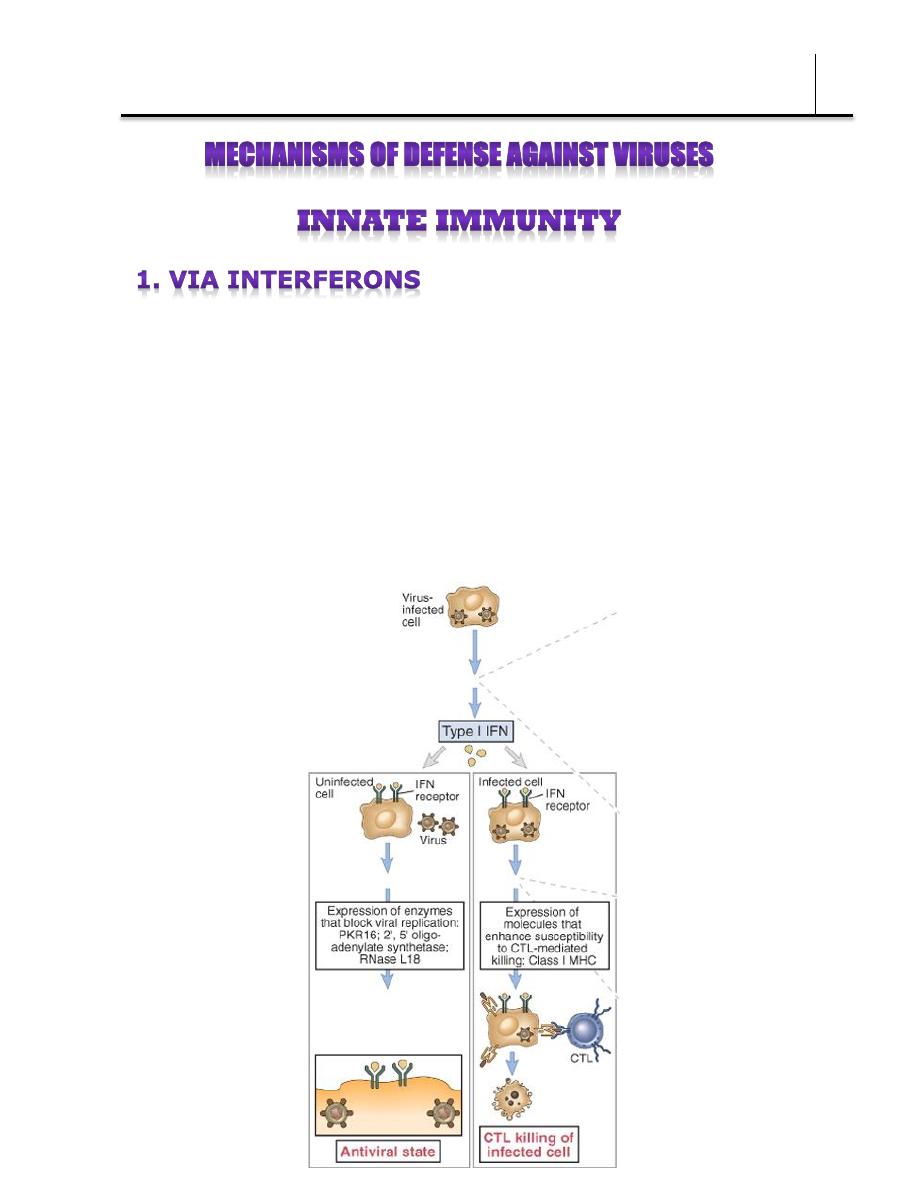
Immunology (Lec 1)
Dr. Donya A Makki Immunity to viruses
1
Virally infected cells produce and release interferons, which play a role
in immune protection against viruses. Interferons prevent replication
of viruses by directly interfering with their ability to replicate within an
infected cell. In addition, Interferons act as signaling molecules that
allow infected cells to warn nearby cells of a viral presence, this signal
makes neighboring cells increase the numbers of MHC class I
molecules upon their surfaces, so that T cells surveying the area can
identify and eliminate the viral infection.

Immunology (Lec 1)
Dr. Donya A Makki Immunity to viruses
2
Viruses are highly adaptable, and have developed ways to avoid
detection by T cells. Some viruses stop MHC molecules from getting to
the cell surface to display viral peptides. By that the immune system
cannot recognize the infected cell. However natural killer cell “NK cell”
are specialized in killing cells that have a reduced number of MHC class
I molecules on their surface. When the NK cell finds a cell displaying
fewer than normal MHC molecules it releases toxic substances, in a
similar way to cytotoxic T cells, which kill the virally-infected cell.
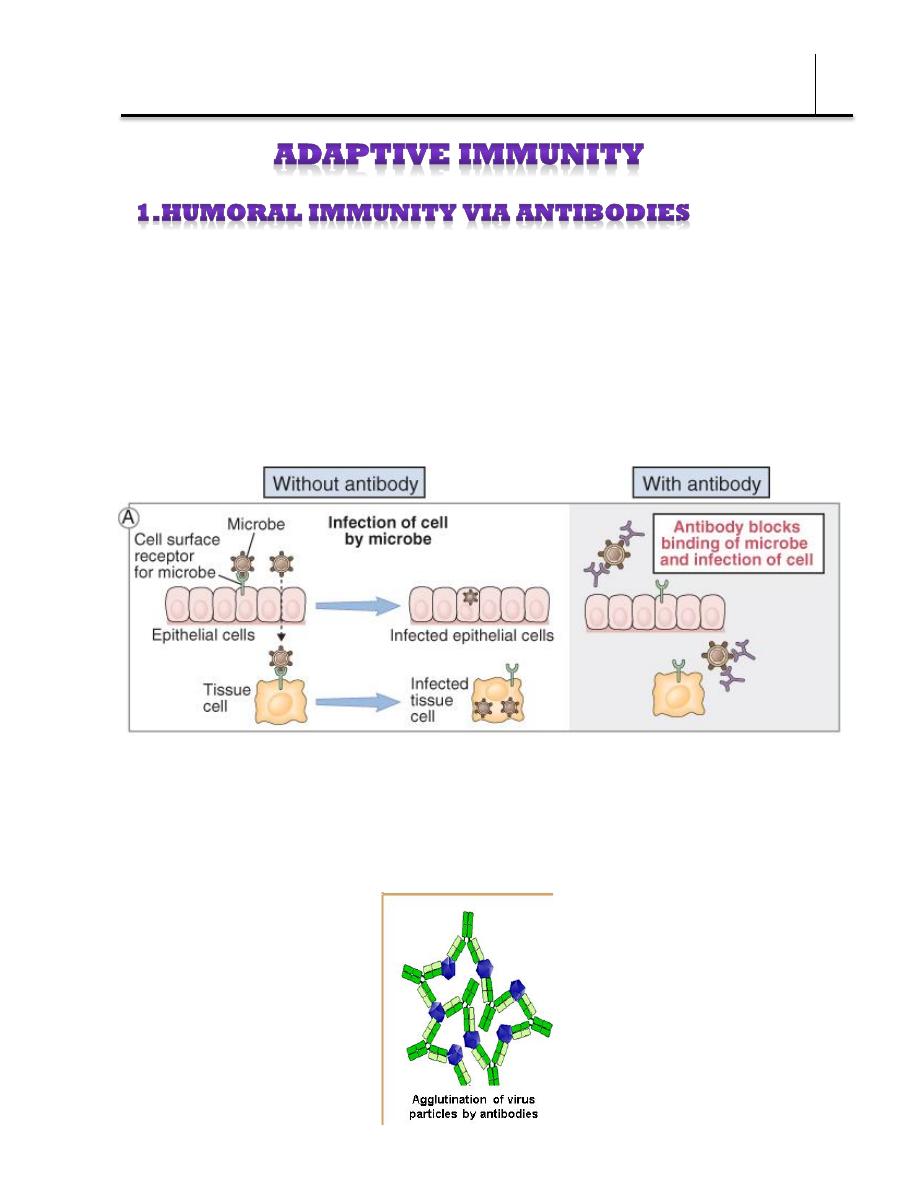
Immunology (Lec 1)
Dr. Donya A Makki Immunity to viruses
3
Viruses can be removed from the body by antibodies before they get
the chance to infect a cell. Antibodies recognize invading pathogens
and bind to them. This binding serves many purposes in the
eradication of the virus:
1.By neutralizing the virus, so it is no longer capable of infecting the
host cell.
2. Anibodies can work together, causing virus particles to stick
together in a process called agglutination. Agglutinated viruses make
an easier target for immune cells than single viral particles.
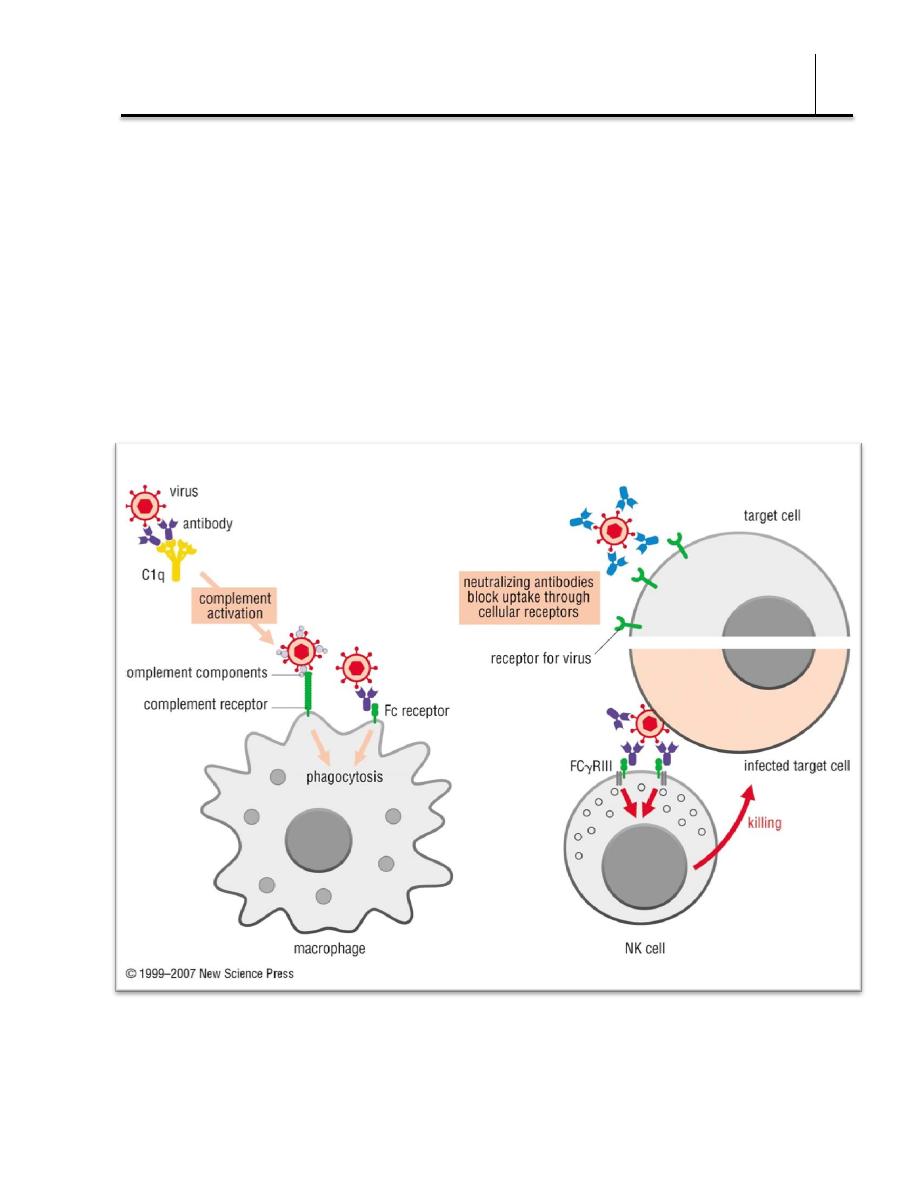
Immunology (Lec 1)
Dr. Donya A Makki Immunity to viruses
4
3. Activation of phagocytes. A virus-bound antibody binds to receptors,
called Fc receptors, on the surface of phagocytic cells and triggers a
mechanism known as phagocytosis, by which the cell engulfs and
destroys the virus.
4. Antibodies can also activate the complement system, which
opsonizes and promotes phagocytosis of viruses. Complement can
also damage the envelope (phospholipid bilayer) that is present on
some types of virus.
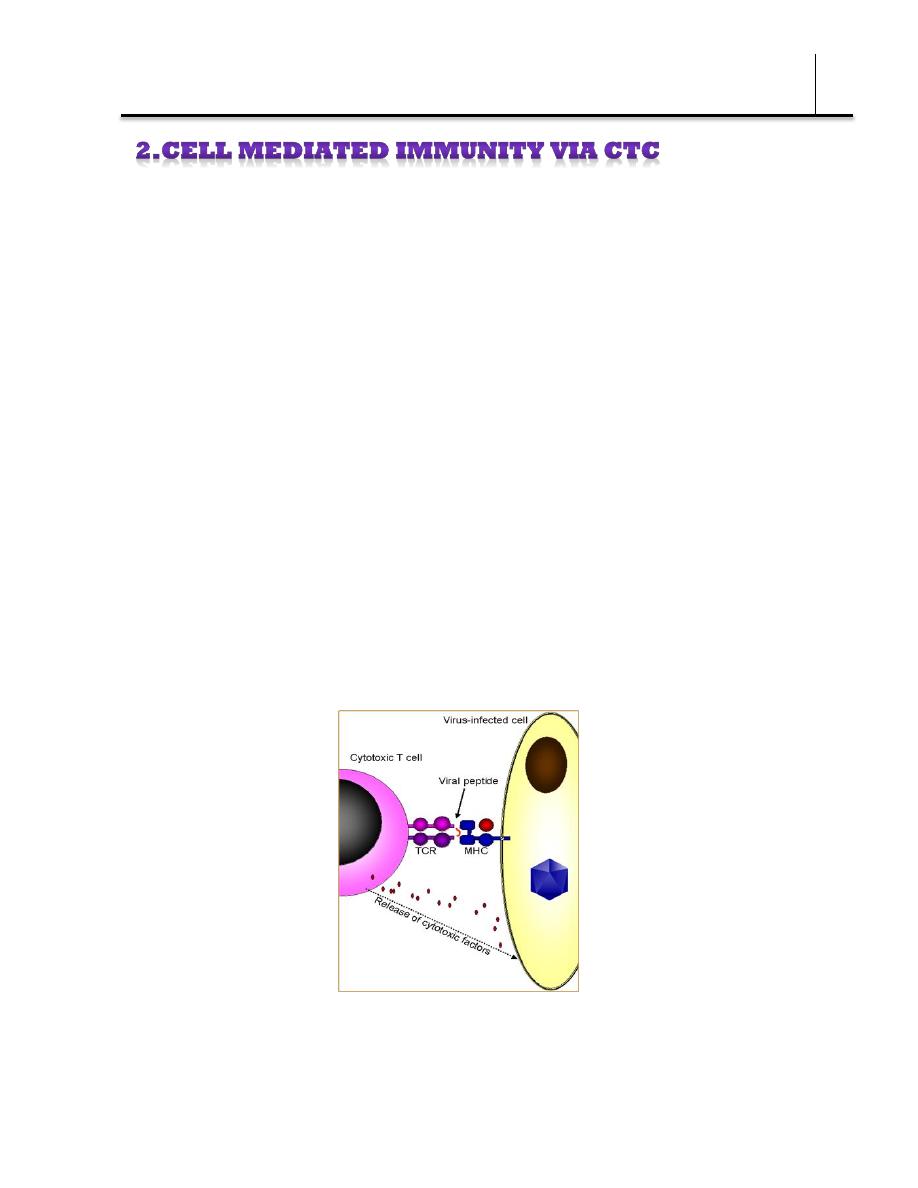
Immunology (Lec 1)
Dr. Donya A Makki Immunity to viruses
5
Viruses invade host cells in order to survive and replicate. Once inside,
viruses will be hidden from the cells of the immune system, and it
would be impossible to know which host cell is infected. To overcome
this, infected cells employ a system that allows them to be recognized
by the immune system. They show class I major histocompatibility
complex proteins (MHC class I) to display pieces of protein from inside
the cell upon the cell surface.
If the cell is infected with a virus, these pieces of peptide will include
fragments of proteins made by the virus. This will be recognized by
circulating t cells. And then T cytotoxic cell will kill the infected cell.
Cytotoxic T cells can recognize virally-infected cells by proteins found
on their surface which are called T cell receptors (TCRs).
Each cytotoxic T cell has a TCR that can specifically recognize a
particular antigenic peptide bound to an MHC molecule. Then T cell
releases cytotoxic factors to kill the infected cell and, therefore,
prevent survival of the invading virus.
Cytotoxic cells are armed with pre-formed mediators. Cytotoxic factors
are stored inside compartments called granules, in both cytotoxic T

Immunology (Lec 1)
Dr. Donya A Makki Immunity to viruses
6
cells and NK cells, until contact with an infected cell triggers their
release. One of these mediators is perforin, a protein that can make
pores in cell membranes; these pores allow entry of other factors into
a target cell to facilitate destruction of the cell. Enzymes called
granzymes are also stored in, and released from, the granules.
Granzymes enter target cells through the holes made by perforin.
Once inside the target cell, they initiate a process known as
programmed cell death or apoptosis, causing the target cell to die.
Another released cytotoxic factor is granulysin, which directly attacks
the outer membrane of the target cell, destroying it by lysis. Cytotoxic
cells also newly synthesise and release other proteins, called
cytokines, after making contact with infected cells. Cytokines include
interferon-g and tumour necrosis factor-a (TNF), and transfer a
signal from the T cell to the infected, or other neighboring cells, to
enhance the killing mechanisms.
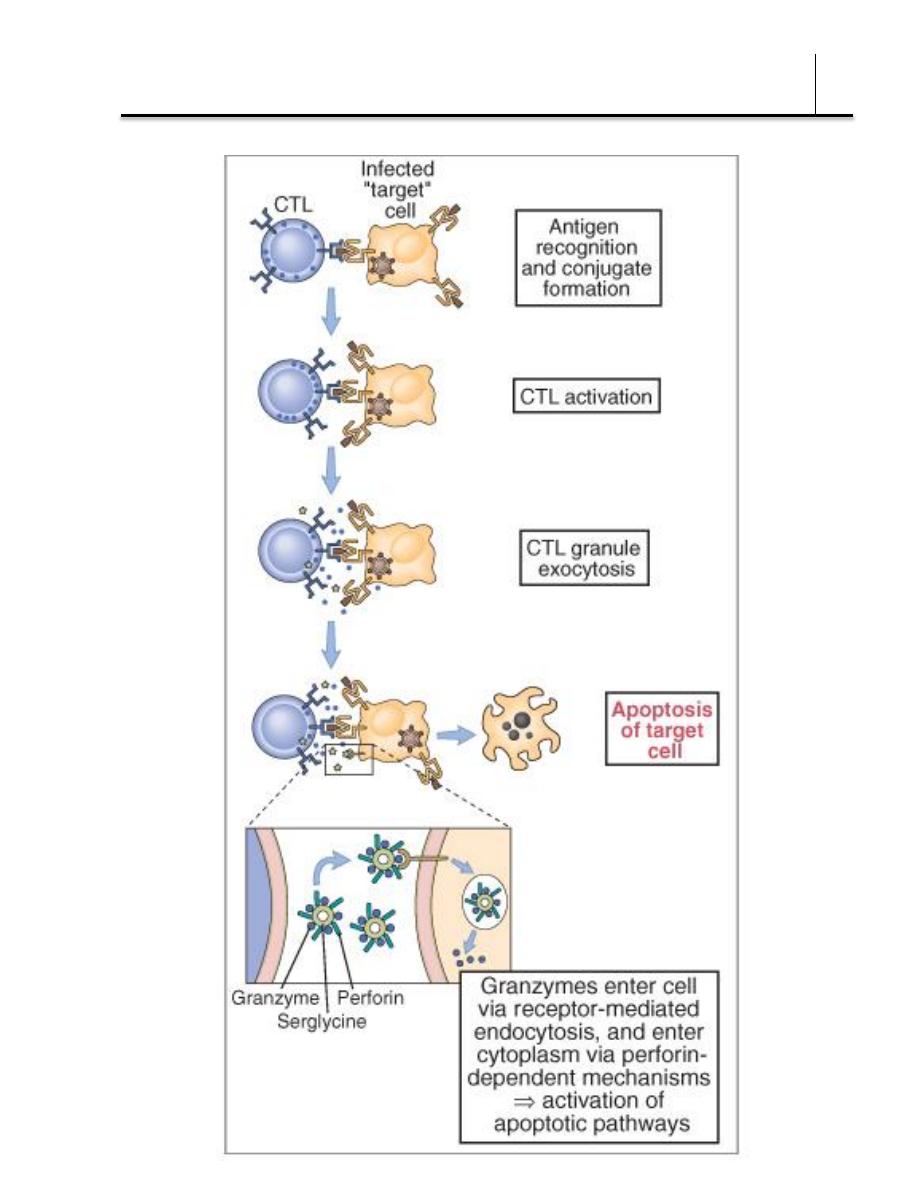
Immunology (Lec 1)
Dr. Donya A Makki Immunity to viruses
7
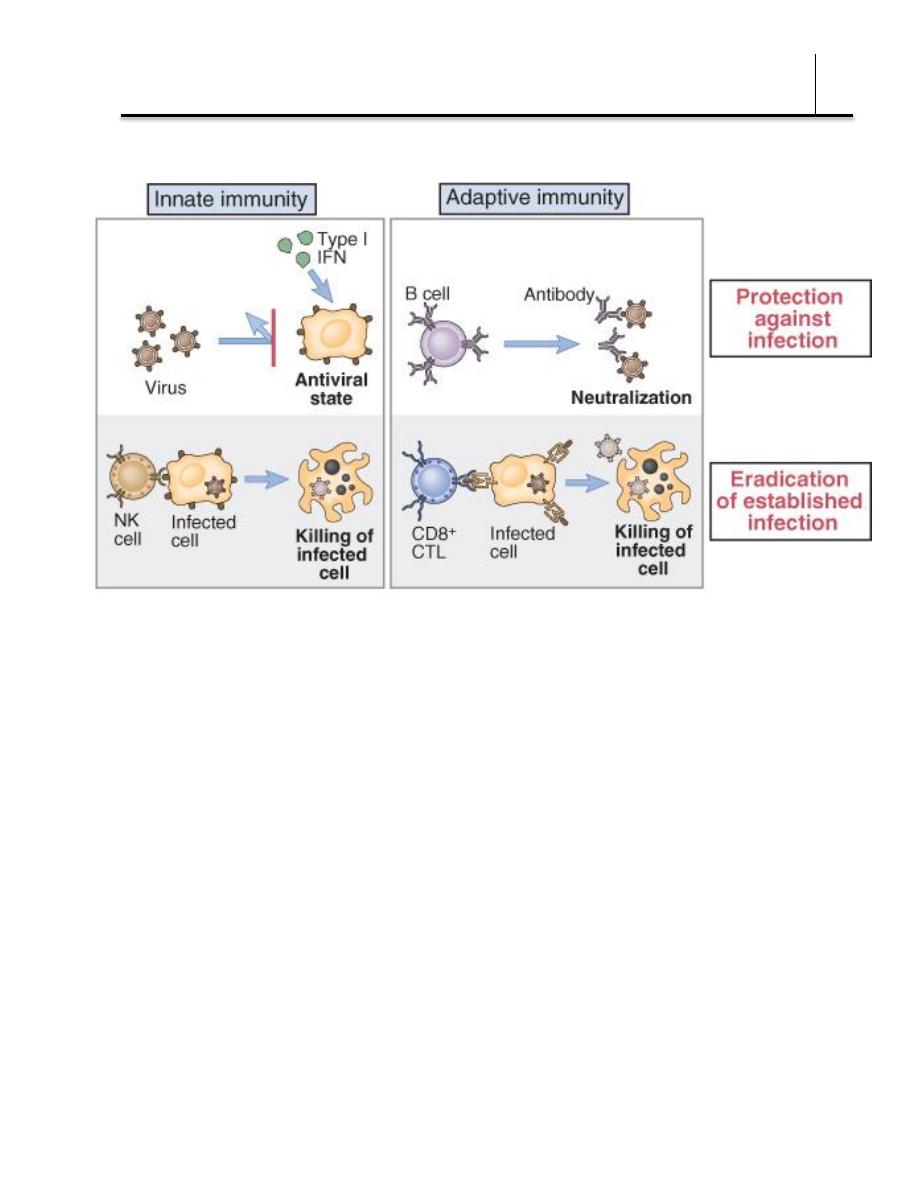
Immunology (Lec 1)
Dr. Donya A Makki Immunity to viruses
8
